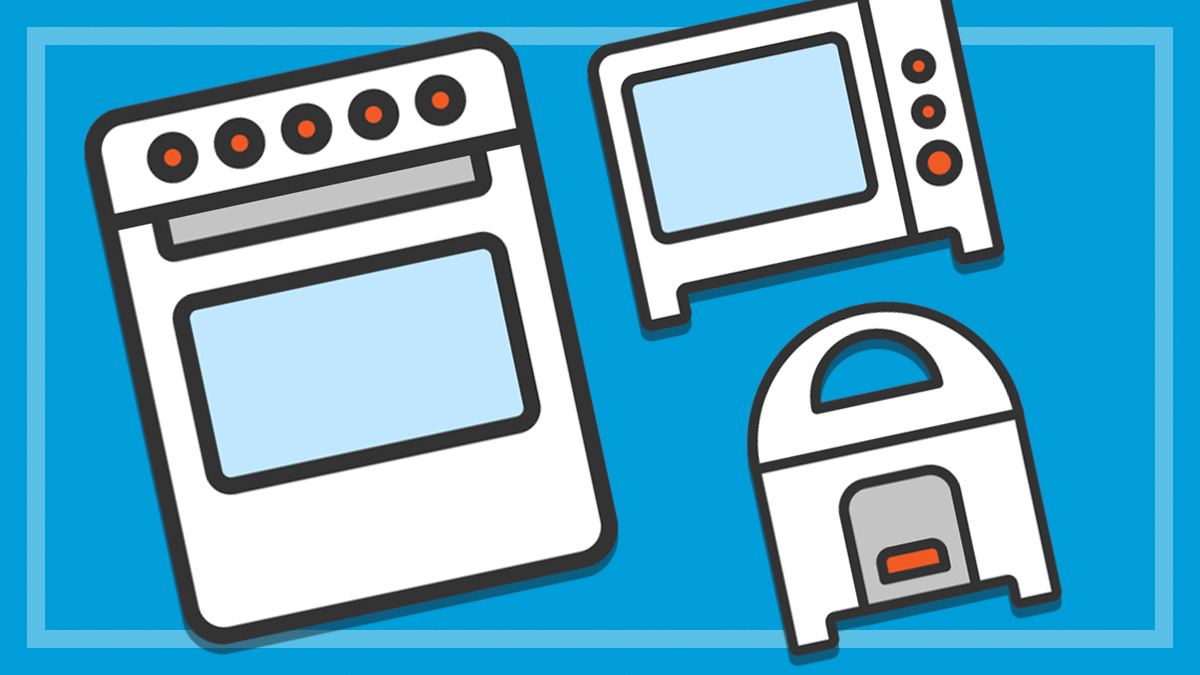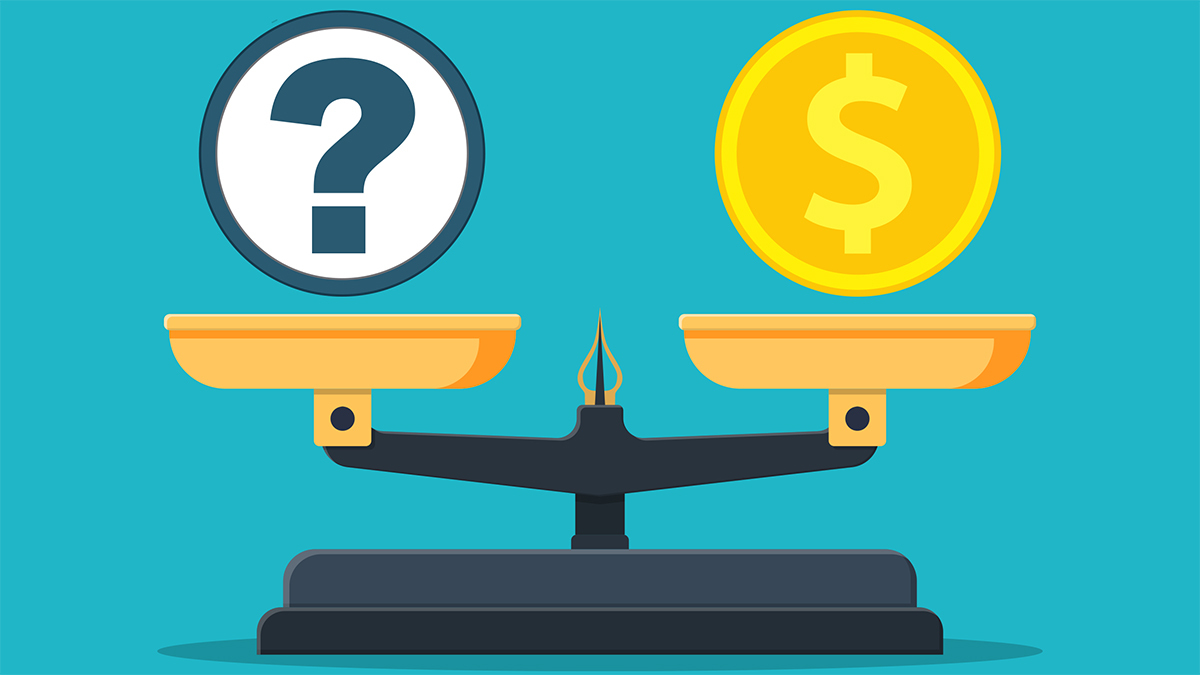Get our independent lab tests, expert reviews and honest advice.
Which cooking appliances are the cheapest to use?

Energy prices and the cost of living in general are on the rise. And if you’ve recently had an electricity or gas bill that’s more than you thought, or you’re looking to reduce the amount of energy you use in the home, it’s a great idea to look at your appliances and how much they’re costing you to see where you could make some savings.
Opting for certain cooking appliances over others could make a difference to your bills
Although the biggest energy-sucking culprits in your home are probably the appliances you use for heating and cooling (they use about 40% of your total energy use), appliances used for cooking still account for about five percent of your total energy consumption. Which means that opting for certain cooking appliances over others could make a difference to your bills.
But which cooking appliances use the most energy and what are they really costing you? And what can do to reduce the amount of energy you’re using in the kitchen?
Which cooking appliances are the most efficient?
When CHOICE kitchen experts test cooking appliances – such as wall ovens, microwaves, air fryers or multi-cookers – they also look at how efficient appliances are and calculate running costs.
Although it’s difficult to compare the same cooking tasks like for like (due to the different methods and styles of cooking for different appliances, plus the fact that same types of cooking appliances vary in efficiency), we’ve laid out the average running costs for each cooking appliance to help you understand any changes and cost savings you could make.
Generally the oven is the most expensive cooking appliance – this is because it is the biggest and most versatile
CHOICE kitchen expert, Fiona Mair
CHOICE kitchen expert Fiona Mair says, “We recommend using our reviews to choose energy-efficient kitchen appliances which will ultimately cost you less over time, but the way you use your appliances, as well as which appliances you use, can also have a big impact on your power consumption and carbon footprint.
“Generally the oven is the most expensive cooking appliance – this is because it is the biggest and most versatile.
“Smaller appliances generally use less power than larger ones, so using the microwave instead of the oven and the toaster instead of the grill, for example, will save you money. An air fryer may not be suitable for all cooking tasks, but will use less energy than an oven as it is smaller and quicker to heat up and cook smaller quantities of food.”
|
Appliance |
Range of running costs for appliances CHOICE has reviewed in this category |
|
Air fryers |
From $9 to $51 per year |
|
Wall ovens |
From $331 to $651 over 10 years (from $31 to $65 per year) |
|
Microwaves |
From $9.48 to $16.72 per year (reheating only) |
|
Induction cooktops |
From $32 to $56 per year |
|
Slow cookers |
From $32 to $98 per year (low setting) |
How much do air fryers cost to cook with?
Air fryers are generally a cheap appliance to cook with. They’re smaller than an oven so they heat up faster, they cook food in smaller quantities, and generally don’t require preheating. In some cases, cooking time can be faster in comparison to an oven, and this makes an air fryer more energy-efficient and therefore cheaper to run.
But the quantity of food you’re cooking matters too. If you need to cook multiple batches to complete your meal, it would outweigh the energy savings. Depending on the size of your air fryer and what you’re cooking, you may be better off using your oven.
Average running costs of air fryers we’ve tested
We calculate the running cost per year for each air fryer we test, based on using it three times a week for 30 minutes at 200°C. The running costs depend on the size and model of the air fryer. But some models have running costs of just $9 per year, whereas others have running costs that go up to $51 per year.
CHOICE members can check our detailed air fryer reviews to find out more.
How much do ovens cost to cook with?
CHOICE experts have reviewed more than 40 ovens and have calculated running costs for each model that range from $331 to $651 over 10 years (from $31 to $65 a year).
The running costs are calculated based on running the oven at 170°C for one hour, three times a week for 10 years at 30c per kWh. Where available, the fan-forced function is used, otherwise the fan-assist is used. For models without either function, the top and bottom elements (convection or traditional bake) are used.
How much do microwaves cost to cook with?
Great for so much more than heating up leftovers, microwaves are an economical and handy cooking helper. For each microwave we test, we calculate a running cost per year based on the energy used reheating a plated meal every day at 30 cents per kWh.
CHOICE experts have reviewed more than 54 microwave models and find that yearly running costs (when the microwave is just used for reheating) range from $9.48 to $16.72.
A microwave will use less energy than a stovetop for cooking things such as vegetables, as there’s no preheating of the cooking zone or pot required
Fiona Mair, CHOICE
“If you’re using your microwave for extra cooking tasks, such as defrosting, cooking eggs, or cooking vegetables, you’ll be using different settings and power levels, which will affect the amount of energy the appliance is using,” says Fiona.
“However, a microwave will still use less energy than a stovetop for cooking things such as vegetables, as there’s no preheating of the cooking zone or pot required.”
To get the most from your microwave, learn about its power levels.
How much do induction cooktops cost to cook with?
Induction cooktops are generally one of the most efficient ways to cook, as no heat or energy is wasted around the edges of the pan (only the elements that come in contact with your pan will be heated). This is because induction cooking works via a magnetic field that turns your cookware into the heating element.
When we test cooktops, we also look at yearly running costs, based on using the cooktop for 30 minutes, three times a week for a year using electricity priced at 30c/kWh per year. We find the running costs for models we test range from $32 to $56 a year.
How much do ceramic cooktops cost to cook with?
When we calculated the running costs for the ceramic cooktops we’ve tested, we found the results to be similar to induction cooktops. We base the yearly running costs on using the cooktop for 30 minutes, three times a week for a year using electricity priced at 30c/kWh per year. For the ceramic cooktops we’ve tested, the costs range from $33 to $53 a year.
How much do slow cookers cost to cook with?
The slow cooker is a great cost saver in the kitchen for many reasons – not least because it’s great for batch cooking and making the most of cheaper cuts of meat.
But its running costs are on par with, or slightly more than, using an oven, so it won’t necessarily be saving you on the energy front. We calculate running costs based on both low-temperature and high-temperature cooking for eight hours a day, three days a week, at 30c/kWh over a year.
- Cost per year of slow cooker on low setting: from $32 to $98
- Cost per year of slow cooker on high setting: from $23 to $84.
Ways to save money on energy while cooking in the kitchen
- All kettles expend a similar amount of energy when boiling water, but why pay to boil a whole kettle when you only want one cup? The more water you use, the more energy is required to bring water to the boil. If you only need one cup of water, measure it out using a cup and add just a little extra due to evaporation or spillage.
- Defrost meats or dishes such as lasagne in the refrigerator before cooking in the oven to reduce cooking times.
- When buying new appliances, check CHOICE reviews to make sure you’re choosing energy-efficient options.
- Choosing the right size and type of saucepan for a burner or element on your stove, and using lids on pots and pans, can help keep energy consumption down. If you’re cooking on a gas cooktop, turn down the flame so that it does not escape around the edges.
- Chop your vegetables into smaller pieces when boiling or roasting to reduce cooking time.
- Turn appliances off at the wall when not in use – appliances such as microwaves and induction cooktops may use standby power, which can make a big difference to running costs.
- Get your appliances to do double time – buy a tiered steamer for your saucepan and steam vegetables at the same time as cooking pasta, or steam vegetables in the rice cooker while your rice is cooking.
- Don’t peek! Every time you open the oven door while cooking, the temperature drops and the oven will have to work hard to get it back up again. Try to resist so your food cooks faster.
- If you do use the oven, try turning it off 5–10 minutes before the end of the cooking time specified in the recipe – the food will finish in the residual heat. (This technique isn’t suitable for cakes, bread, and biscuits, which require precision cooking, but could work with dishes such as pies, stews and casseroles.)
- Cook multiple dishes in the oven at one time.
- If you do find your energy use increasing, check your appliances to make sure they’re working effectively or if they need maintenance. For example, if the seals on the door of your oven or microwave, or in the lids of a pressure cooker or multi-cooker, are broken or missing, this can lead to loss of heat and longer cooking times, increasing your energy costs.






